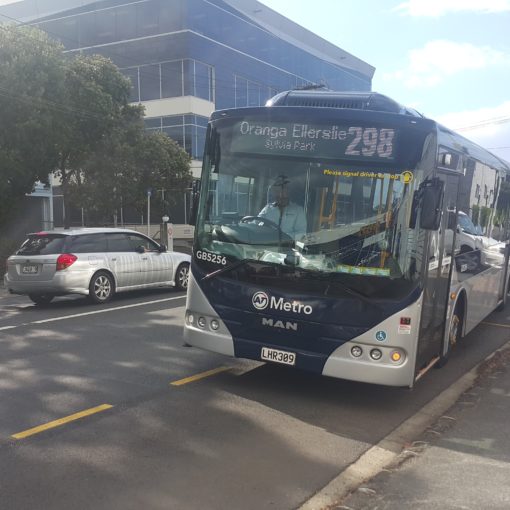An historical perspective by Gordon Bonetti, CBT Member
The Maori people of New Zealand have a very apt proverb, “Mata a muri kei te aro ke!”Loosely translated it means, “ To find the way forward we must first look back into the past.”So it was from this viewpoint that this article was compiled.
NZ Herald’s editorial of 20th May “We’re Stuck with Kiwi Rail,like it or Not” twice makes the statement, “Rail has not paid its way for generations,if ever.” Historically, there is evidence this is incorrect. Transport archives reveal that from 1965 to 1970 NZ Govt. Railways actually ran profits totaling $16 million, had a surplus again in the early 1980s then made a record profit of $23.9 million in 1984. So,whilst a state run operation in a regulated environment where road & rail were co-ordinated, rail was profitable. However, despite warnings to the contrary, the Bolger Government continued to implement the Transport (1983 ) Amendment Act, further progressing the Douglas-era “freemarket” deregulation model. Thus evolved the present transport shambles we have today. Eventually by 1990 in the cut-throat, free-for- all transport market which evolved, rail was $1.3 million in debt. (The Bolger Govt trunk electrification cost $300m of this.) So in October 1990 Govt. wrote off the debt from the Railways Corporation & injected new capital to form a separate entity NZ Rail Ltd. This company made a profit of $36.2m in 1992 and $18.0m in 1993.
In 1993 NZ Rail Ltd was sold by the Bolger Govt (far too cheaply) to a consortium, of Wisconsin Central Railroad/Berkshire/Fay Richwhite. Privatised and renamed Tranz Rail in 1995. It listed on NZ sharemarket in1996. The new owners began massive “rationalisation”, which meant sacking thousands of staff, closing stations & depots, cutting passenger services & some branch lines. The “human presence” of railways vanished as the workforce necessary to market, manage, load & operate the system were laid off. Soon less staff meant less business & less profit. This neglect of customer’s needs was quickly catered for by hungry truckers who soon captured the freight market from smaller business in the provinces. Over the 10 years of Tranz Rail privatization, services were further cut, freight volumes dropped as the business suffered & only recorded profits(publicly available) were in 1999 of $70.2m & again in 2000 of $47.0m. Soon the company started selling land, buildings, redundant machinery & other assets in order to remain solvent. Significant asset sales were: in 2001 the sale of 50%of TranzScenic; and in 2002TranzRail sold the Auckland suburban Rail network to Govt.for $81.0m. During this period of “asset-stripping”, many of rail’s former core businesses such as timber, cement, fertlizer& lime, motor vehicles & machinery, & even some dairy & meatworks companies (traditionally rail users) switched to road mode.
The most significant factors which accelerated the decline of NZ railways over this decade of neglect, were on analysis;
- Deregulation of the road mode
- Privatization of Rail
- Inconsistent Rail Service.
Plus there was huge neglect of rail infrastructure with much of it becoming unsafe,so the network was sold back to the crown.
In 2003, Australian company Toll Freight bought exclusive operator rights over the track network. Then in 2004 the Clark Govt. formed Ontrack to own & maintain the network with Toll Rail providing the services. Toll initially marketed hard to reclaim the dairy trade through Waikato, Taranaki & Hawkes Bay and established a joint venture with Port of Tauranga through an inland container terminal (Metroport at Penrose). But after only 4y ears operation, Toll had some success during 2005 with a stated $41.5m profit (unclear if track fees had been deducted) and managed to increase rail freight volumes to surpass those of the 1980s. However, with continuing arguments over track-access charges & a wish to divest itself of passenger services, Toll readily sold rail back to the N.Z. Govt.for $655m in 2008.
Thus after nearly 14 years of mostly unprofitable privatization & rail’s share of the freight market down to 15%, the Government formed Kiwi Rail Holdings Ltd. So now, with Kiwi Rail & Ontrack back in Government control (plus workshop maintenance United Group 2009), let’s hope Govt & Kiwi Rail’s management take heed of the past and not repeat the mistakes and negativity of the private operators of past years in their search for quick profit.
Given time and capital to rectify 15 years of neglect, modernize its sales methods, up-date it’s ailing fleet and track network,and through utilizing positive strategies, not negative closures and retrenchment, Kiwi Rail could eventually return its many services to profit!.

